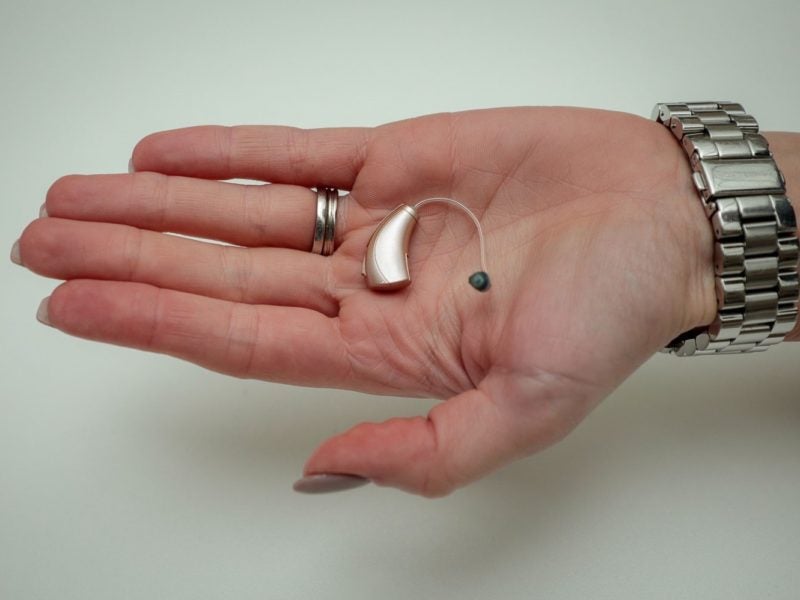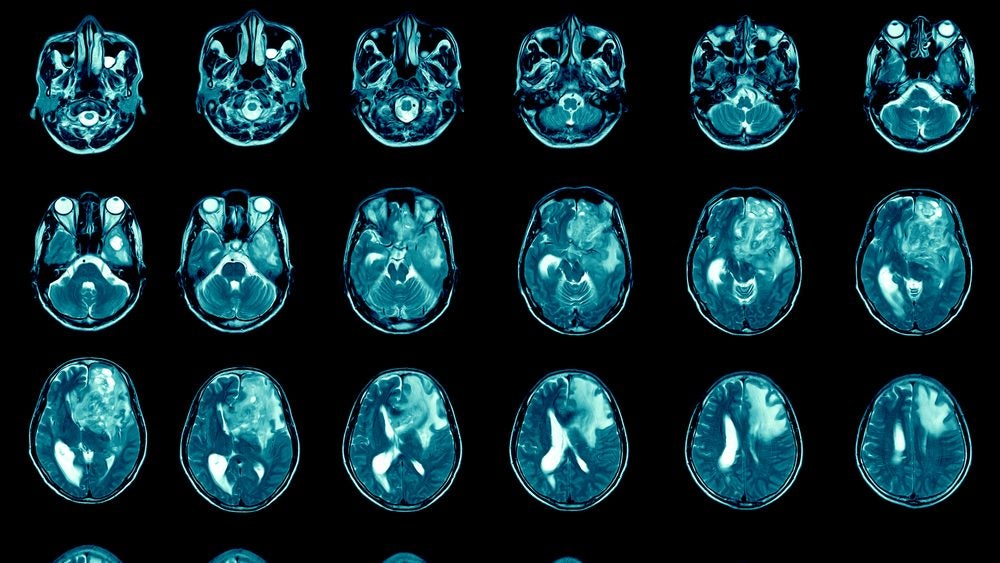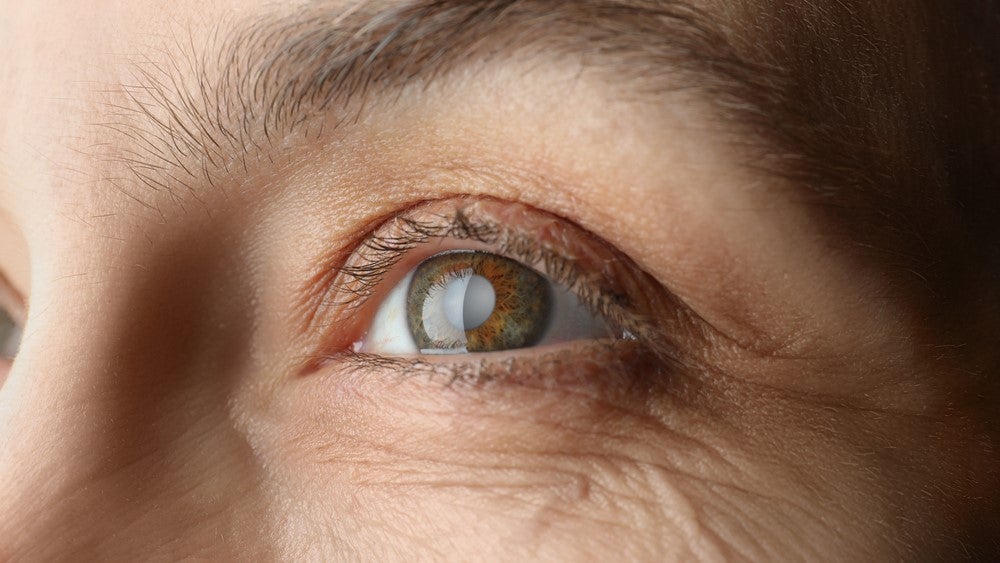
Technological innovations have begun to disrupt the hearing aid market in recent years; advanced products manufactured by the likes of Orion and Amplifon connect to smart devices through the internet and Bluetooth, which creates new digital possibilities for users. Starkey Hearing Technology is hoping to revolutionise smart hearing aids with the launch of the first sensor-based, AI-powered hearing aid, Livio AI.
First launched in the US in August, Starkey’s latest hearing aid innovation has now been introduced into private practice in the UK. The NHS has also expressed some interest in Livio AI.
The rechargeable device marks a transition “from hearing aids being a standalone device, to a connected one…to multi-purpose, multi-function [devices],” according to Starkey chief innovation officer and audiologist Dave Fabry, speaking at a launch event for the product in London on 20 March.
It is described by the company as a ‘healthable’ device, which combines the best hearing audio quality of any Starkey device alongside the use of sensors and AI to monitor both body and brain health, which can be tracked from the linked Thrive app.
Fabry notes the three pillars of thought behind the integrated device, saying: “We want to create the best sounding and performing hearing aids. We want to provide a gateway to health and wellness, and [finally, create] a gateway to information.”
How well do you really know your competitors?
Access the most comprehensive Company Profiles on the market, powered by GlobalData. Save hours of research. Gain competitive edge.

Thank you!
Your download email will arrive shortly
Not ready to buy yet? Download a free sample
We are confident about the unique quality of our Company Profiles. However, we want you to make the most beneficial decision for your business, so we offer a free sample that you can download by submitting the below form
By GlobalDataStarkey president Brandon Sawalich commented in a company statementaddsed: “Hearing health is directly connected to overall health, and treating hearing loss through hearing aids can improve or limit the risk of not only dementia but other chronic conditions such as cognitive decline, diabetes, and heart disease.”
Tracking health and wellbeing using the Thrive app
The Thrive app gives the patient access to two main dashboards, one that focuses on body health and the second on brain health. The body health aspect is tracked by the sensors in the hearing aid and the AI algorithms track brain health.
The body health section is similar to consumer fitness trackers; the device records a step-count, as well as tracking activity more intense and faster than a brisk walk and any movement.
Evidence shows that monitoring physical activity improves active, physical behaviour, which is beneficial for well-being and could slow down cognitive decline. Fabry notes that Starkey data has shown that “when people are using and engaging with the app more, they will use their hearing aids more.”
Starkey claims Livio AI’s body dashboard has a 99% accuracy, because you can’t fake activity when it is measured from your ear, rather than your wrist. The company’s CTO Dr Achin Bhowmik said: saidsays: “Most fitness tracking devices use the wrist, but the ear provides far more accurate data – in fact, it’s the ideal spot for reliable tracking, and Livio AI is the first- ever device to take advantage of that.”
The brain health dashboard records how often patients wear their hearing aids, patient engagement while wearing the hearing aid and active listening, which looks at patient use in different types of environment.
Audio ‘memory’: adjusting to the environment
In addition to the tracking function, patients can set so-called ‘memories’ of environments they commonly use where they have specific difficulty hearing, such as in the car, in the office or in an auditorium.
Special educational needs consultant and TedX speaker Andrew Whitehouse, who has been trialling the Livio AI aids since January, notesd how life-changing the device has been and how it has truly enabled him to do his job, which involves public speaking in large spaces.
Although there are pre-set memories, they can also be personalised by users, supported remotely by their audiologist, when one of the pre-set environments isn’t quite suitable.
Moving from one memory to another can be done manually on the app, but the Livio AI device is also capable of automatic adjustment. For example, the device can detect when the patient is moving more than 10 miles per hour and change to the car memory. Also, once a location has been geotagged on the app as a certain environment, then every time the patient returns, the hearing aid will automatically switch to the correct memory programme.
Interestingly, as part of the ‘gateway to information’ element, patients can also use the app to translate phrases into 27 languages discreetly and directly into the hearing aids of the wearer. Fabry clarifies that communicating in other languages is harder for those with hearing difficulties, and this feature could enables them to travel more widely.
Similarly, when talking to Amazon Alexa, which Bhowmik helped create, the user hears her response straight into the hearing aids. The same can happen when a patient receives a phone call or when they have plugged one of Starkey’s accessories into a TV.
Identifying falls and sending automatic alerts
The Livio AI hearing aid also has a fall alert function; there is a connection between hearing loss and disrupted balance, since the latter is caused by damage to the vestibular nerve located in the ear.
The sensors and AI in the hearing aid can detect if the patient has a fall. As Starkey’s UK tech director Paul Lamb explains, “The sensor is made up of two elements: an accelerator and gyroscope, so it is understanding if you are upright or are you falling. The artificial intelligence in the hearing aid system can work out if someone has fallen over…or if they have dropped the hearing aid on the floor.”
If a fall is detected, the device initiates a 60- second countdown, then if the patient fails to get up, it will send an automatic alert to up to three contacts nominated by the patient in the Thrive app.
The device will then speak to the patient and tell them an alert has been sent and when the contacts have picked up the alert. The app provides the contact with a map to the location of the patient, as well as information about the quickest route based on current traffic information.
These alerts can be manually cancelled if there is a mistake by the patient. They can also be initiated manually by pressing the buttons on the hearing aid, which both Lamb and Fabry note is useful when a patient feels at risk.
This has clinical applications as it “keeps a record of the number of falls and manual alerts” so action can be taken before it leads to serious injury, says FabryXXX.
Future innovations: heart rate monitoring
Starkey are currently carrying out the final tweaks on a heart rate monitoring feature of Livio AI, which will be the first for a hearing aid.
An infra-red, inbuilt sensor can record an instant heart rate, as well as a heart rate recovery. The latter is, according to Fabry, “an assessment of cardiovascular heath where you exercise and get your heart rate elevated into the target zone, and then stop exercising, and it measures how much your heart rate covers in two minutes.”
Lamb explains this is possible because “the ear canal is really good place to capture blood flow.”








